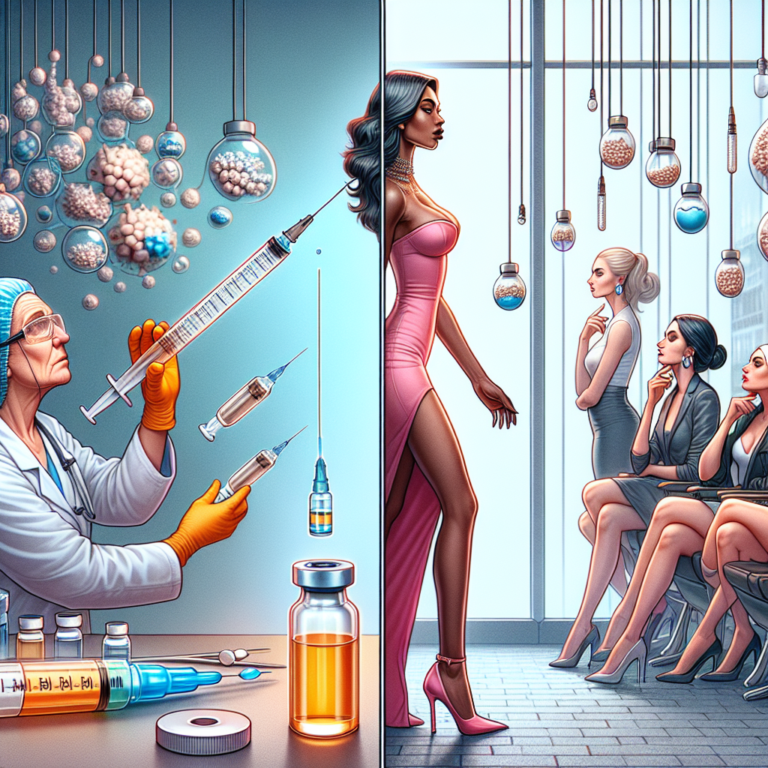The Evolution of Botox: From Medical Miracle to Beauty Sensation
In a little over two decades, Botox has undergone a remarkable transformation from a medical necessity to a popular beauty treatment. This evolution reflects broader cultural shifts, advancements in medical science, and a growing acceptance of cosmetic procedures. What started as a tool for treating serious health conditions has now become synonymous with youthfulness and beauty.
Historical Background: The Medical Origins
Botox, derived from the botulinum toxin produced by the bacterium Clostridium botulinum, was initially discovered in the 1820s. However, it wasn’t until the late 20th century that its potential as a medical treatment was recognized. In the 1970s, Dr. Alan Scott began researching the toxin’s ability to relax muscles, and by 1989, the FDA approved the use of Botox for treating strabismus (crossed eyes). This marked the beginning of Botox’s journey as a therapeutic agent.
By the late 1990s, the FDA also approved Botox for treating chronic migraines, excessive sweating, and various muscle disorders. Patients experiencing conditions like cervical dystonia found significant relief with Botox injections, which highlighted the medical benefits of the toxin. This period solidified the drug’s reputation as a miracle solution for serious health issues.
The Shift to Cosmetic Use
The pivotal moment for Botox came in the early 2000s when physicians and patients began realizing that the same properties that made Botox effective for medical conditions could also reduce the appearance of wrinkles. After several studies demonstrated its efficacy in smoothing facial lines—particularly frown lines between the eyebrows—the FDA approved Botox for cosmetic use in 2002. This approval marked a turning point, propelling Botox from the medical field to the beauty industry.
The rise of celebrity culture, combined with the increasing influence of social media, helped to popularize Botox as a go-to cosmetic treatment. Public figures and influencers openly discussing their use of Botox helped shift societal perceptions, normalizing the procedure and reducing the stigma surrounding cosmetic enhancements.
Cultural Impact and Popularity
Botox quickly became a household name, leading to a surge in demand. According to the American Society of Plastic Surgeons (ASPS), Botox injections became the most common minimally invasive cosmetic procedure by the mid-2000s, repeatedly maintaining its status over the years.
As the treatment gained traction, aesthetics professionals began to explore its application beyond just wrinkle reduction. Off-label uses emerged, encompassing treatments for conditions like jaw clenching, thinning jawlines, and even improving the appearance of a gummy smile. This versatility solidified Botox’s status as a multifunctional treatment in both the medical and cosmetic industries.
Advancements and New Trends
Over the years, the Botox landscape continued to evolve. New formulations and products emerged, such as "DaxibotulinumtoxinA" and "AbobotulinumtoxinA," allowing practitioners greater flexibility in treatment options. Additionally, the advent of "Botox parties" and the rise of clinics specializing in cosmetic injectables made Botox treatments more accessible to a broader audience.
As we move into a more health-conscious society, there has been an increasing trend towards less invasive treatments. In response, many clinics now offer various alternatives, including "Baby Botox," which focuses on administering smaller doses to create a more subtle, natural look. This approach caters to those who may be hesitant about fully committing to more significant cosmetic procedures.
The Future of Botox
Despite its widespread adoption, Botox is not without controversy. Concerns over safety, long-term effects, and the ethics of cosmetic enhancements have sparked ongoing debates. Regulatory bodies continue to monitor and evaluate the use of Botox, ensuring that practitioners adhere to safety guidelines and best practices.
Looking ahead, the future of Botox appears to be promising. Ongoing research is being conducted to explore its potential in areas such as mental health, chronic pain management, and even treating age-related diseases. Furthermore, as the beauty industry continues to evolve, it’s likely that patient demand will drive innovations in the way Botox is administered and marketed.
Conclusion
From its origins as a medical miracle to its status as a beauty sensation, Botox’s journey reflects significant changes in both healthcare and cultural attitudes toward cosmetic treatments. In an era where self-care and aesthetics are increasingly prioritized, Botox stands as a testament to how a versatile medical solution can fundamentally reshape perceptions of beauty and health. Whether for therapeutic or cosmetic purposes, Botox’s evolution continues to influence practices in dermatology and aesthetics, marking the next chapter in its fascinating story.


